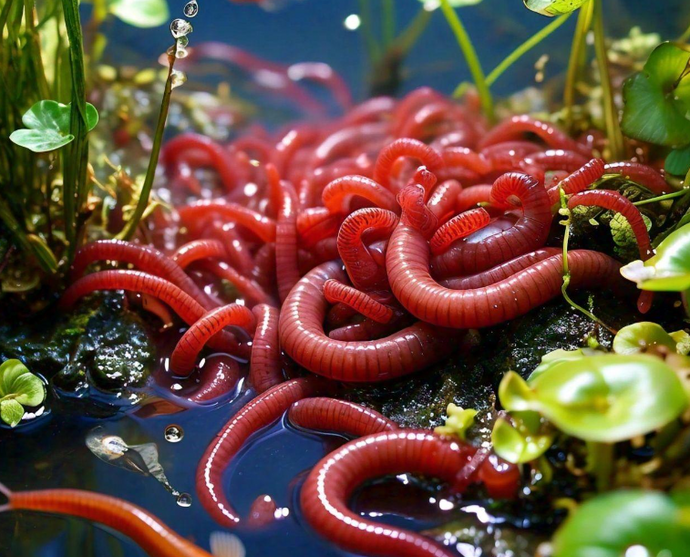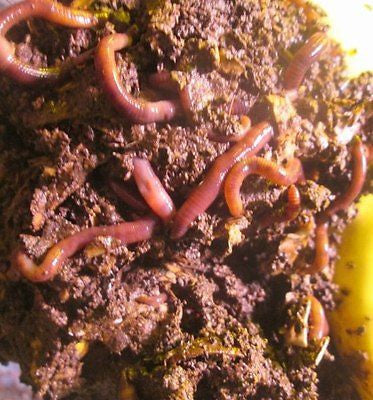Healthy red worms: For natural soil care
Wiki Article
Why Red Wigglers Are the most effective Selection for Your Composting Needs
Red wigglers have actually emerged as a remarkable selection for composting due to their amazing ability to efficiently break down natural matter while producing high-grade worm castings. The journey to effective vermicomposting involves even more than merely getting these worms, and comprehending the suitable problems and mistaken beliefs bordering them is vital for optimizing their potential.Advantages of Red Wigglers

Red wigglers prosper in a variety of problems, making them versatile to various composting setups, from tiny containers to bigger systems. They master vermicomposting, where their activity creates a high-grade end product referred to as worm spreadings, abundant in helpful microorganisms and nutrients essential for plant growth. This natural plant food advertises soil wellness, improves dampness retention, and enhances plant durability versus parasites and diseases.
Additionally, using red wigglers can significantly lower methane emissions connected with landfill waste, adding to ecological sustainability. Their convenience of treatment and minimal maintenance needs make them ideal for both amateur and knowledgeable composters. Inevitably, incorporating red wigglers into your composting technique not just promotes effective waste administration but additionally raises the quality of your compost.
Suitable Composting Conditions
Producing ideal composting conditions is necessary for making the most of the efficiency of red wigglers in breaking down raw material. These worms grow in a controlled setting that resembles their all-natural habitat, which mainly is composed of wet, dark, and well-aerated areas. To accomplish this, preserving a temperature series of 55 ° F to 77 ° F is vital, as severe temperatures can prevent their activity or even cause death.(red wiggler worms for sale near me)Wetness degrees need to likewise be thoroughly checked; red wigglers need a wet atmosphere, preferably around 70% wetness content. Also much dampness can result in anaerobic problems, while not enough wetness can cause dehydration. Furthermore, a balanced carbon-to-nitrogen proportion, preferably around 25:1 to 30:1, sustains optimum food digestion and nutrient cycling.
In addition, the composting medium must be kept loose and aerated, permitting proper air movement. This not only profits the worms however likewise help in the breakdown of natural products. By making certain these excellent problems, composters can develop a flourishing ecological community that improves the effectiveness of red wigglers, ultimately bring about abundant, nutrient-dense compost.
Just How to Begin Vermicomposting
Starting vermicomposting is a straightforward procedure that can produce significant benefits for both your yard and the environment. To start, select a suitable container, such as a plastic container or a wood box, guaranteeing it has ventilation openings for air flow. A size of roughly 15 to 20 gallons is optimal for small-scale operations.Following, prepare the bed linens product, which need to be a combination of shredded paper, cardboard, and coconut coir. This bed linen offers a comfy habitat for the worms while retaining dampness. Objective for a bedding deepness of about 4 to 6 inches.
Once the bed linens prepares, introduce red wigglers into the bin. A populace of about 1,000 worms is enough for refining kitchen area scraps efficiently. After including the worms, include a well balanced mix of eco-friendly products, such as fruit and veggie scraps, along with brown materials, like dried out leaves.

Nutrient-Rich Castings
(red wiggler earthworms for sale)The red wigglers in your vermicomposting system play an important duty in creating nutrient-rich spreadings, a very sought-after organic plant food. These spreadings, commonly referred to as worm humus, are the result of the worms absorbing raw material and excreting it in a kind that is exceptionally helpful for plants.Rich in important nutrients such as nitrogen, phosphorus, and potassium, worm spreadings offer a balanced resource of fertility that boosts dirt structure and promotes healthy and balanced plant development. Additionally, they consist of valuable bacteria that better improve dirt wellness, assisting in nutrient absorption and illness resistance.
The slow-release nature of worm castings makes certain that nutrients are available to plants over an extensive period, minimizing the risk of nutrient leaching and hence adding to lasting gardening practices. Unlike artificial plant foods, which can bring about dirt destruction gradually, worm spreadings boost the soil's physical, chemical, and organic residential properties.
Because of this, incorporating red wigglers into your composting initiatives not only alleviates waste however also creates a premium natural change that substantially benefits gardens, landscapes, and potted plants alike. - red wigglers
Usual Misunderstandings About Worms
While numerous people identify the advantages of making use of worms in composting, a number of mistaken beliefs persist regarding their biology and habits. One usual misconception is that all worms are equally effective for composting, when in fact, just particular types, like red wigglers, grow in organic waste environments. These worms are especially adapted to composting, making them perfect for this function.One more mistaken belief is that worms are fragile and need excessively certain problems to endure. Actually, red wigglers are rather resilient, able to endure a range of temperature levels and moisture degrees, given they are maintained within an appropriate variety.
In addition, some believe that worms consume all kinds of food waste indiscriminately. Red wigglers prefer specific organic materials, such as fruit and vegetable scraps, and can have a hard time with meat, milk, and oily foods, which can produce odors and bring in parasites.
Verdict
Finally, red wigglers stand for an optimum option for composting due to their fast decay capabilities and versatility to numerous settings. The nutrient-rich castings produced dramatically boost soil health, promoting sustainable horticulture practices. Understanding the perfect problems for vermicomposting and addressing common false impressions about these worms even more strengthens their role in efficient my site waste monitoring. red wigglers. By leveraging the benefits of red wigglers, individuals and areas can add to a more lasting and eco-friendly method to natural waste disposal.Report this wiki page